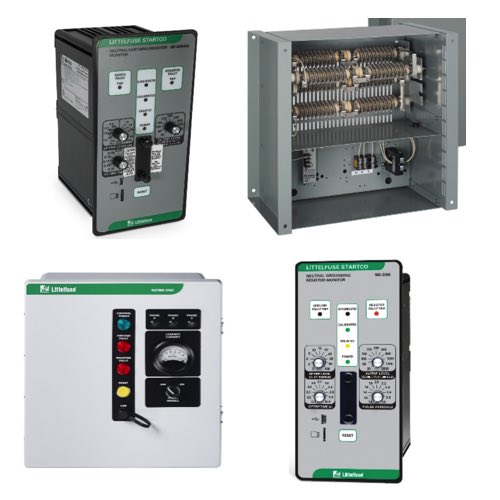Neutral Grounding Resistors

Neutral Grounding Resistors (NGRs) play a pivotal role in enhancing the safety and reliability of a power system, particularly in an industrial and high-voltage electrical system. Their primary function is to limit the flow of fault current during a ground fault, reducing it to a safe level to protect equipment and personnel. By connecting the neutral point of transformers or generators to the ground through a resistor, NGRs control the fault current in case of a ground fault, preventing the detrimental effects that can arise from uncontrolled fault currents.
Ground fault currents, if not properly managed, can lead to severe damage in electrical equipment and dangerous conditions like arc flashes. Neutral grounding resistors provide ground fault protection by ensuring that the fault current does not exceed a predetermined value, allowing for a controlled and safe operating environment. This is crucial in systems where the neutral is directly grounded.
Neutral Grounding Resistors are part of a broader category of neutral grounding devices, which also include neutral grounding transformers and neutral earthing resistors. These devices are essential in three-phase systems for maintaining the stability of the line to neutral voltage during fault conditions. They work in tandem with protective relays and circuit breakers to quickly identify and isolate the fault point, thereby limiting equipment damage and ensuring continuous operation.
More Information about Neutral Grounding Resistors
In a ground fault event, the neutral grounding resistor system limits fault currents to a level that can be safely managed by the system's protective devices. This is particularly important in medium voltage and high voltage systems, where the energy involved in faults can be significantly higher. The resistance value of the NGR is carefully selected based on the system's characteristics, including its line voltage and the desired fault current level.
For industrial systems, using NGRs with a low resistance grounding approach can be beneficial, especially in systems prone to frequent ground faults. This method helps in minimizing the fault currents to a low level, increasing safety and reducing the risk of damaging fault currents. Conversely, high resistance grounding is used in applications where it is important to limit the ground fault current to a very low current, often just enough to operate protective relays or earth fault relays.
The construction of NGRs typically involves materials that can withstand the heat generated during a fault, such as stainless steel for the enclosure. The current rating and temperature limitations of the NGR are key considerations, ensuring that the device can operate safely under continuous or intermittent fault conditions.
FAQs
What is a neutral grounding transformer?
A Neutral Grounding Transformer is a special type of transformer used in power systems to provide a path for current flow from the neutral point of a system to the ground. It is typically used in conjunction with resistors to limit fault currents to a safe level during ground faults, thereby protecting the system and equipment from damage and ensuring operational safety.
What is a Relay & How it Works
What is a relay?
A relay is an electrically operated switch. Most relays use an electromagnetic to operate the switch. An electromagnet is a device that creates a magnetic field by passing an electrical current through a coil of wire. The magnetic field is then turned off when the current is removed.
Why use relays?
Relays are commonly used when there is a need to control a switch with high voltage or circuits with large amounts of current passing through them. Operating these types of switches manually can be dangerous, inefficient and impractical. By using relays, operational safety is increased while also providing the ability to use smaller, safer and less expensive electrical equipment to control devices. Using relays allow for control of several devices on a single switch, as opposed to using several switches for each device. Relays can be combined with timers and logic circuits to assist in electrical automation.
How do relays work?
A relay consists of two separate circuits that work together to open or close a switch (or contacts). The first circuit drives the coil (or electromagnet). The electricity passes through the coil, creating a magnetic field. The second circuit contains a set contacts and a separate power source. This circuit is what provides power to the electrical load.
When electricity passes through the coil, it creates a magnetic field. This magnetic field pulls the contact from the other circuit closed (or against the stationary contact) which will allow current to pass through the contacts, therefore allowing the load to become energized. When the coil is de-energized, the magnetic field is gone which allows the contact to be pushed back into its original state, de-energizing the load side of the circuit.

